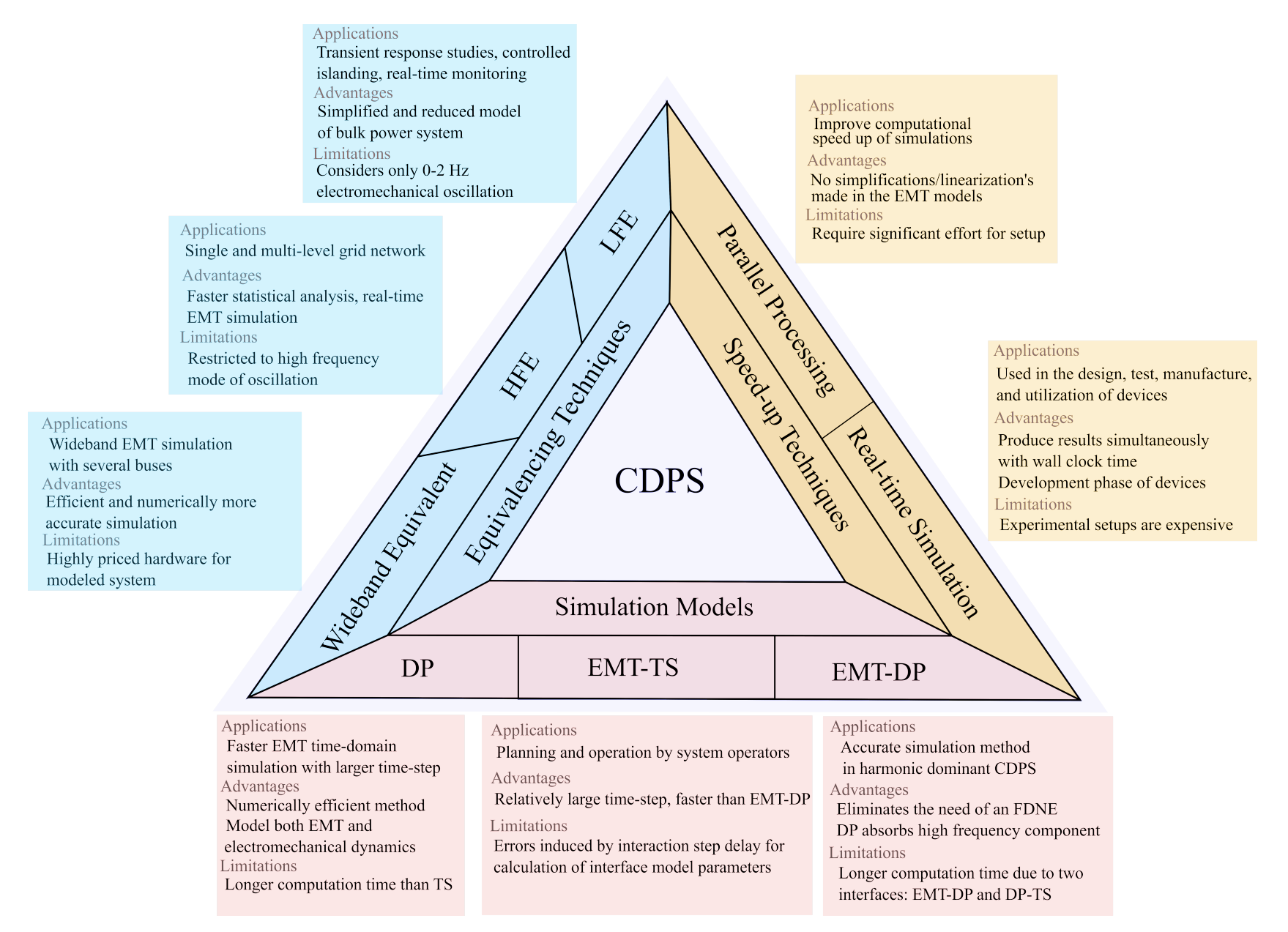New Paper Reviews Electro-Magnetic Transient Simulations for Power Systems

Dynamic and transient stability simulation of converter-dominated power systems is commonly performed using electromagnetic transient simulators. EMT simulators allow fast control actions to be simulated to capture fast switching dynamics from converter-based generators among other dynamic stability phenomena. However, EMT simulators are very computationally intensive which can make simulating large power systems, such as the Alaska Railbelt or Hawaii grids, difficult. Numerous modeling and hardware based methods, such as cosimulation, network equivalents and real-time digital simulation, have been developed to allow for faster, yet accurate, simulation of such systems in EMT platforms.
The multi-institution converter-dominated power systems team, funded through the Department of Energy’s Established Program to Stimulate Competitive Research, recently published a collaborative peer-reviewed paper in the journal IEEE Access. Authors are from South Dakota State University and the University of Alaska Fairbanks. The paper is titled "Review of Methods to Accelerate Electromagnetic Transient Simulation of Power Systems." ACEP co-authors include Phylicia Cicilio, Mariko Shirazi and Richard Weis. The paper reviews EMT acceleration methods and tools to improve simulation speed and accuracy issues of simulating large power system networks with converter-based generation using EMT simulation platforms.
This paper is the second of the two collaborative review papers written by students, faculty and researchers across the EPSCoR CDPS team. Under Cicilio's guidance, the authors have held bi-weekly Zoom meetings during the past 10 months.
For more information on this research or paper, please contact Phylicia Cicilio at pcicilio@alaska.edu.
Framework showing the summary (includes applications, advantages and limitations) for each of the simulation models (pink), system equivalencing techniques (blue) and speedup techniques (yellow).



